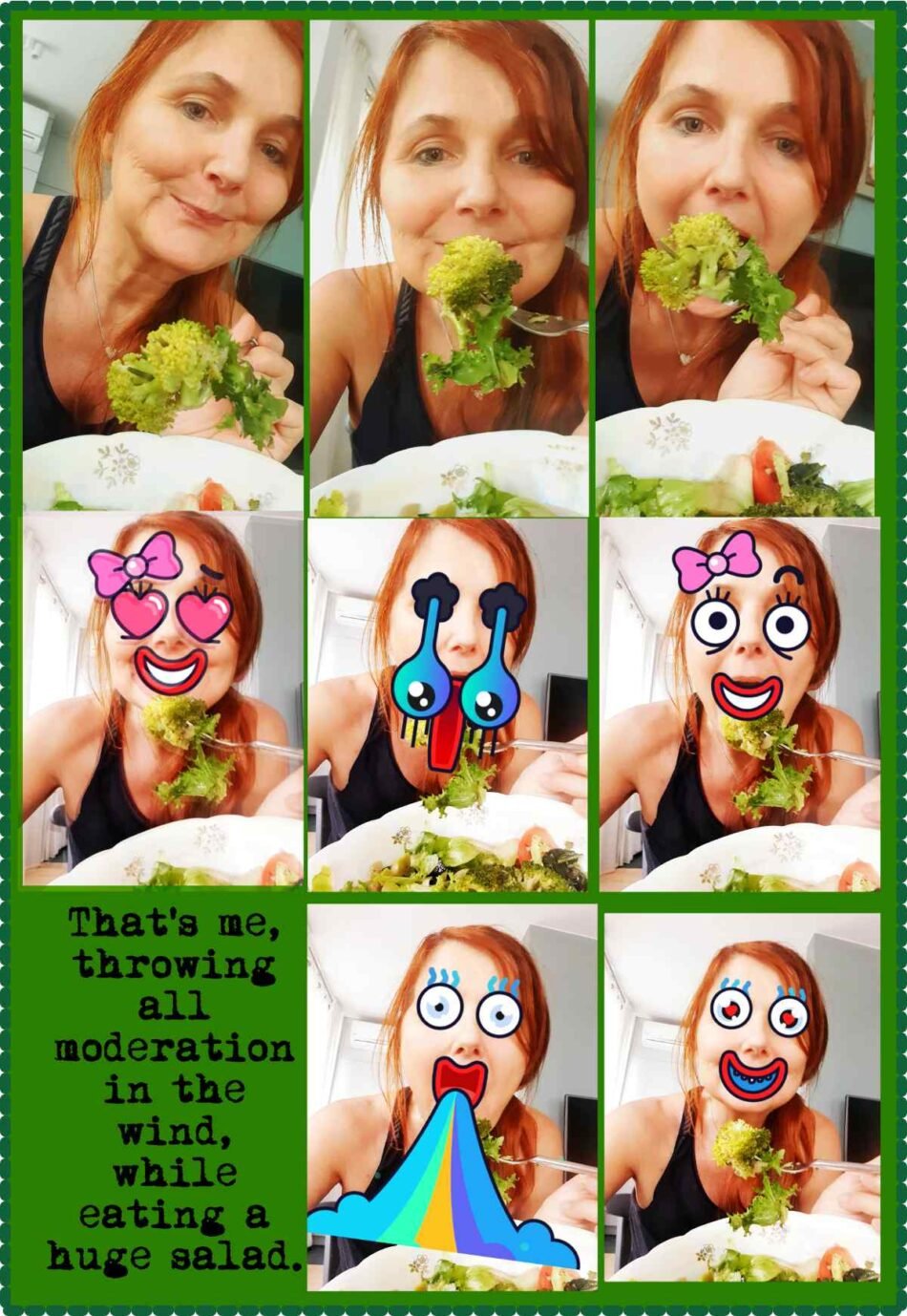The Myth of Moderation (and how it applies to smoothies and everything else in life)
‘Everything in moderation’ goes the saying.
And there’s wisdom in that.
But moderation can be a tricky thing.
There is this hidden danger that will make you trip and crumble down a slippery slope before you even know it.
Let me explain.
When it comes to our health, there are two extremes—one is chasing every new thing (diet, supplement, pill), which is exhausting, second—not doing anything, because, well, doing requires effort, and it’s exhausting.
The third approach—which most of us follow—is somewhere in between.
We are trying to keep everything ‘balanced’ and do things ‘in moderation.”
This, BTW, can still be exhausting—but also dangerous and because most people’s idea of what moderation or balance even are is skewed in modern society.
Because here is the thing…
Moderation in the wrong thing is still wrong.
Moderation in doing the right thing may not be enough to balance out the wrongs.
(Most people get this all wrong.)
So, trying to ‘balance’ the bad with good may not work.
And this applies not just to health.
How about damaging the natural world, depleting natural resources, cutting down the Amazon, waging wars, and other shenanigans we humans do far beyond moderation. How about moderation in beating children or endangering their future, or hurting animals?
In all of these cases, what would MODERATION even mean?
If you agree that hurting our planet and animals is wrong, and you want to ensure the best possible future for your kids (or even just yourself), then the idea of eating meat and dairy in any quantity is appalling.
In all of these cases the concept of moderation just doesn’t make sense.
Whenever possible and as much as possible, we should stop doing the ‘wrongs’ and focus on the ‘rights’, especially when they are easy, such as switching to a plant-exclusive diet.
But let’s pick something less dramatic, like soft drinks.
Just looking at portion sizes of various processed juices and beverages, trying to have them in moderation is still bad and should avoided as much as possible.
Even skipping the XXL size and going for a medium or small size is not ideal, as they both are loaded with processed sugar and other undesirable ingredients.
Of course, having a cola once or twice in a blue moon won’t kill you.
But when we have sugary food and drinks, the reward center in the brain lights up making it incredibly hard to stop eating. It’s not your lack of willpower, it’s science working against you.
So, it’s best to make it a habit to skip these thinks altogether, and just opt for water.
But what about smoothies?
Well, there are smoothies and there are smoothies, LOL.
Many smoothies sold in the stores are highly processed and loaded with sugar. If you’re trying to stay away from sugar and reduce calories, then it’s best to skip them altogether, or only have them occasionally.
And how are green smoothies different?
For starters, YOU make them, so YOU control their content.
When I started out, I put lots of sweet fruits into the mix, like bananas, peaches, and pineapple, while today I’m often opting for more savory tasting combinations, even adding ingredients like frozen cauliflower, zucchini, or beans—may sound like a CRAZY idea for smoothies.
So, if you insist on the concept of moderation—you may choose to add sweet ingredients to your green smoothies in moderation. And you may add nuts in moderation, as well, as they are quite high in calories.
But even if you make a smoothie that tastes sweet, the greens and other veggies, plus nuts, seeds (if you add them)—will provide your body with loads of healthy fats, fiber, vitamins, minerals, antioxidants, which slows down the absorption of sugar, plus they’ll satisfy your hunger AND your sweet tooth without being high in calories.
How is that for a winning combination? 🙂
And if you’re making savory smoothies, blended salads, or soups, the moderation principle takes care of itself — because you can’t overeat on those things.

Don’t try this at home with pizza or fries. LOL.
And be weary of everything that comes with a long list of ingredients that you won’t find in a farmer’s market and can’t even pronounce.
Most of the processed foods are literary engineered to taste good. I saw a documentary on how they do it — it was scary because those foods force you to overeat, and make you addicted — and it’s done with full knowledge, using science, ON PURPOSE, so no matter how much you’ve had, you can’t resist; you always want more.
This makes applying moderation to modern processed foods is virtually impossible and almost impossible to do a mere mortar without secret superpowers of self-control, restraint, and wisdom, LOL.
And applying moderation to animal foods is still hurting animals and the planet.
Your safest bet is sticking to whole, unprocessed plant foods as much as possible.
And green smoothies made from whole plant foods are just that.
Even if they are blended, they are still amazing for you.
So, just have them. As well as other whole plant foods.
Throwing the moderation out to wind 😉
Drink to your health,
Joanna@GreenReset.com
P.S. You can find my Green Reset and other books on Amazon.com, or they’ll be soon available direct from my own Joanna’s shop that I’m building.
So, take care, and stay tuned!


